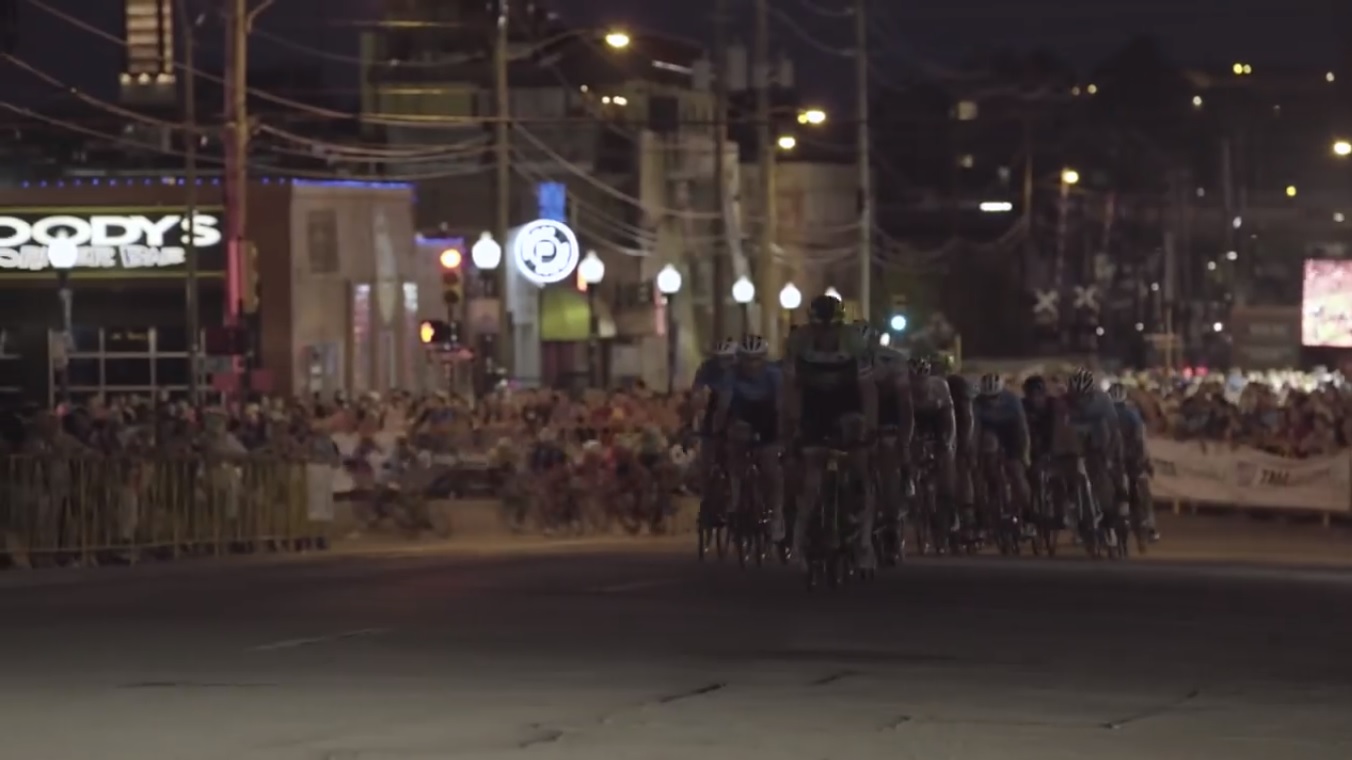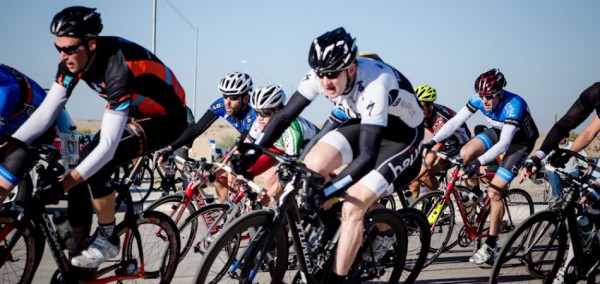
Tons of people, a downtown setting, a sweet course closed to traffic, beer, music, an absurd amount of bike riders, and all generally at night make for American bike racing at it’s finest. All across the country in large cities and small towns alike, downtowns are transformed into a stage for some of the fastest bike riders in the country to put on a show of speed, agility, and guts. Criteriums make for one of the best ways to watch a bike race as riders race on a short circuit that only takes generally one to two minutes to get around. There is a culture around them from the side of the riders to the fans that watch, both of which change slightly to the location of the race. A race in southern California is a bit different than that of Oklahoma, to that of Pennsylvania. They all however are off the hook. Fun and exciting to watch as well as to race. Peloton Magazine published this awesome video made by Jordan Clark Haggard that captures the feel of these races with Tulsa Tough in Tulsa, Oklahoma. Depending on where you live, you can probably check out one of these races in person easier than you think. Let us know what you think of the video and any questions you might have on criterium racing.
What is Criterium Racing
What Is Criterium Racing
 If you are looking for something a little different to add to your bike racing calendar, or you just want a fun way to improve your bike handling skills, consider signing up for a criterium race. Criteriums are personally my favorite race to ride in, and everyone I know who has come to watch one has loved the whole event. What’s not to like?
If you are looking for something a little different to add to your bike racing calendar, or you just want a fun way to improve your bike handling skills, consider signing up for a criterium race. Criteriums are personally my favorite race to ride in, and everyone I know who has come to watch one has loved the whole event. What’s not to like?
What is a Criterium Race?
Criterium races (or crits, for short) are short, fast races held on closed loop courses usually between 0.5 and 2 miles in length. Crits differ from standard road races in that there is no fixed race distance. Instead, you race for a predetermined length of time…well, sort of. Here is how a crit works. The race starts off just like a standard road race – after the gun, the field will take off around the loop, jockeying for position, attacking, normal race stuff. The first distinguishing feature of crits are ‘primes’ – these are similar to intermediate sprint points in road races, but there are usually a lot more of them in crits. As the field loops past the start/finish line, a race official will ring a bell signifying the end of the next lap is a ‘prime’. Primes are often cash or merchandise prizes for whomever gets to the line first! Because they usually pop up every 5 minutes or so during the race, they tend to keep the pace fast and exciting.
The end of the race is where crits are really different. In a normal road race, you always know exactly how far you are from the finish. Not so here. The end of a crit race isn’t determined until shortly before the race actually ends. Here is what happens. While all the racing action is happening, race officials are monitoring how long each lap takes. Based on that, they will try to end the race close to the advertised duration of the race. At the appropriate point (usually 5-10 minutes before the end), they will ring a bell and display lap cards that tell the racers exactly how many laps are left until the finish. At this point, with a definite end in sight, the pace really heats up, and the racers typically have 3-5 laps to position themselves and prepare for the mad dash to the finish on the last lap!
The Good
There are a lot of great things about criterium races. Perhaps most importantly, they are awesome spectator events! Anyone who has watched a major bike race live knows that waiting a couple hours to see a bunch of multi-colored blurs zoom past you for a few seconds isn’t the most riveting viewing experience. Because crits are held on small, usually urban courses, you can pick a nice spot and see the action every couple of minutes – making it easy to follow what is happening in the race and providing plenty of chances to check out your favorite rider.
It’s not all about creating an awesome experience for those watching the race though – crits have been hands down the funnest races I’ve ever participated in. They go just about full throttle from start to finish, with attacks and counter-attacks happening all the time, and you have to be constantly alert to your position, who is around you, and how you are going to take that next corner. There is no chance of getting bored in a crit race!
In addition to the fun factor, crits are a great opportunity to develop fitness and bike-handling skills. Though the first few laps of your debut criterium might feel a bit overwhelming – there is nothing quite like heading into that first tight, 90 degree corner at 30+ mph with 60 or 70 other cyclists inches away from you – you very quickly get accustomed to the situation. You begin to corner with more confidence, you know exactly which lines to take to maintain your speed, and you no longer freak out about the close confines of the peloton. And, of course, you are doing all of this while your heart is threatening to burst out of your chest because you feel like you’ve been sprinting flat out for 10 minutes now – and the race has only just started!
The Bad
Not everyone is quite as enthusiastic about this style of racing as I am however. Criteriums can be prone to crashes, especially in the lower categories, when people are less experienced and haven’t fully developed the pack-riding skills to stay safe. The tight courses that a lot of criteriums are held on only exacerbates this problem, and a poorly laid out course can be downright dangerous regardless of your bike-handling aptitude. Starting off with lower-key crits is the best way to minimize your crash risk – most major cities will hold a weekly ‘twilight race series’ (no, nothing to do with the book) on weeknights, and these races tend to be smaller, shorter, safer races.
As we all know, crashing not only impacts you, but your bike as well. Humans are very good at repairing themselves – bicycles, unfortunately, haven’t evolved such abilities. I know a lot of people that don’t race crits because they don’t want to destroy their super expensive bike, to which I say ‘get another bike!’ A simple aluminum frame, mid-range bike can be had pretty cheaply and will be practically indestructible – aluminum is much less likely to shatter or crack from impact. In the event you are involved in a crash and break something, your replacement bill will only be a few hundred dollars, rather and a few thousand. And an added bonus – you can use the bike as your rain bike!
Is Criterium Racing For Me?
You’ve read about the good and bad sides of what is, in my opinion, an awesome style of bike racing – but is it for you? If you like excitement, speed and competition, it is! If you are looking for the next challenge on two wheels, give criterium racing a try. Even if you don’t love it, the benefits you get in fitness and bike skills will make you a much better rider on the road!